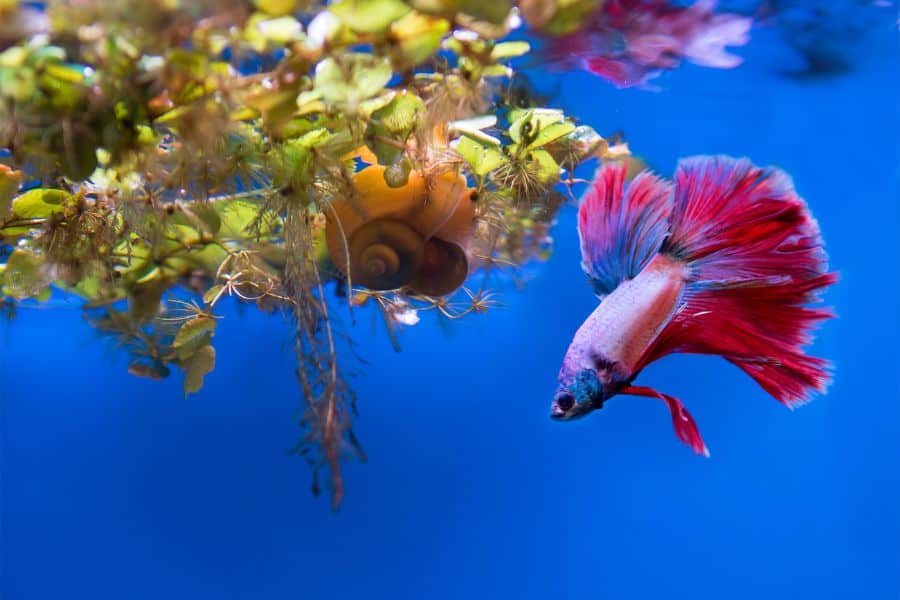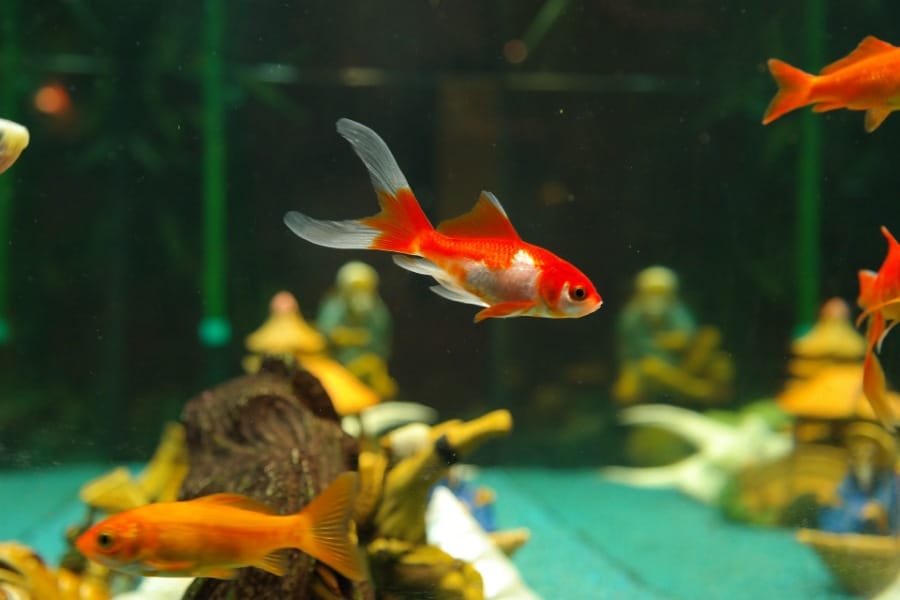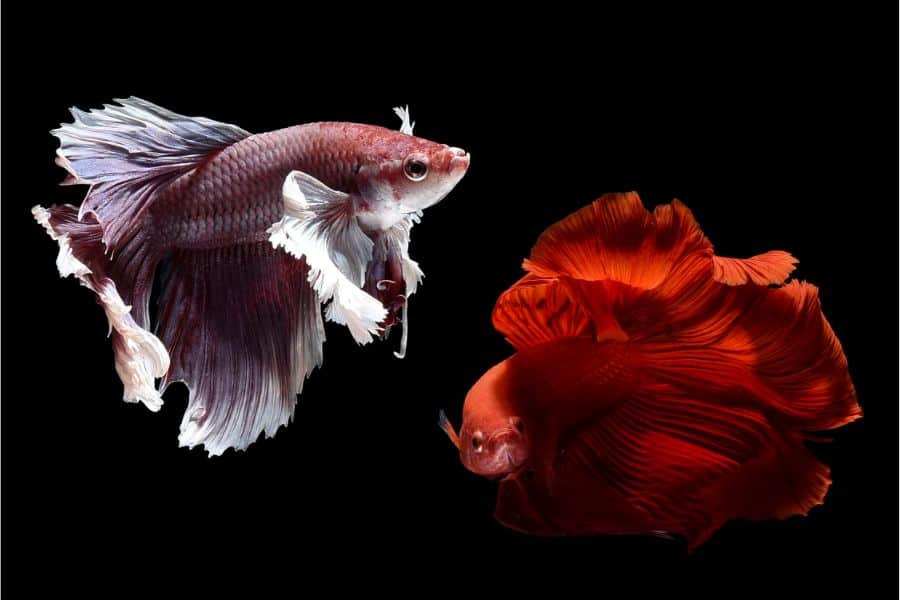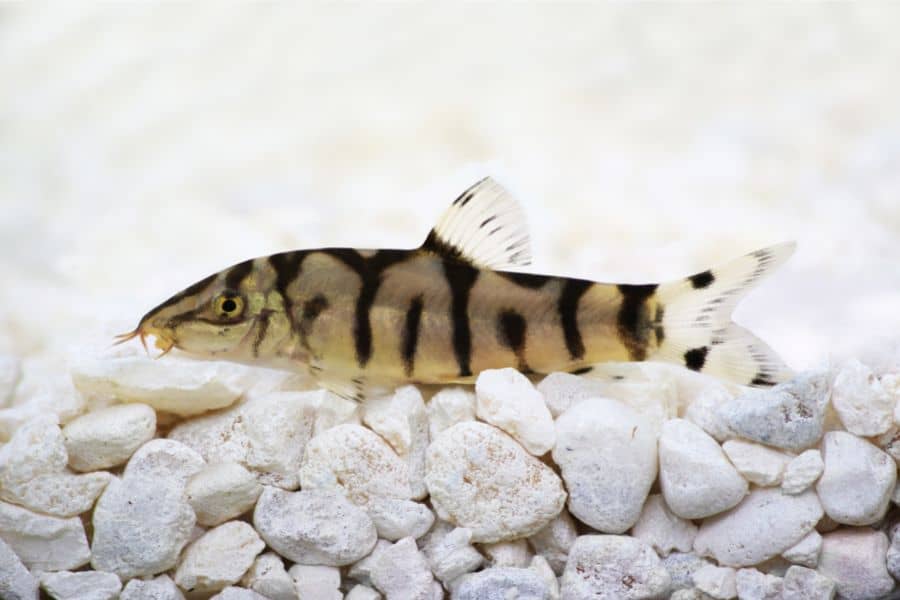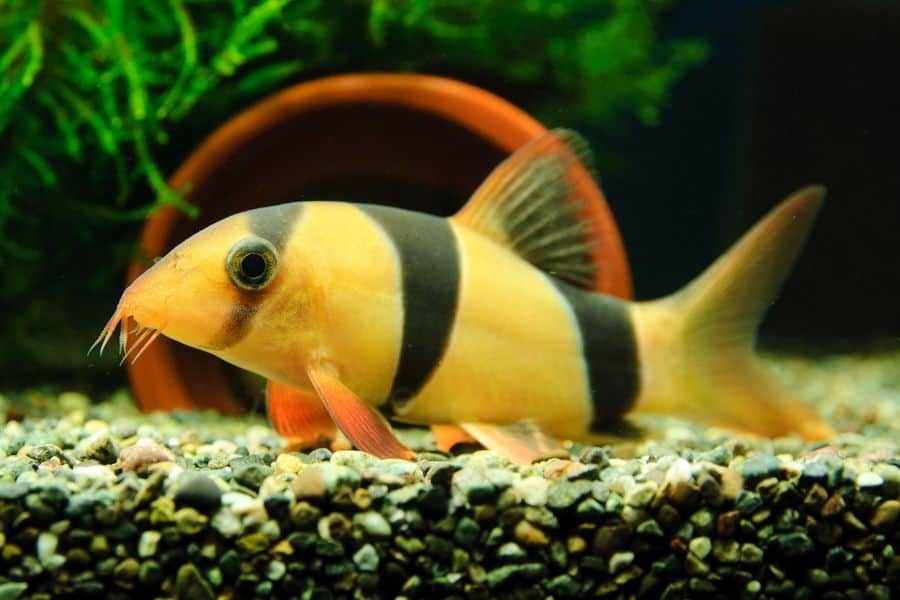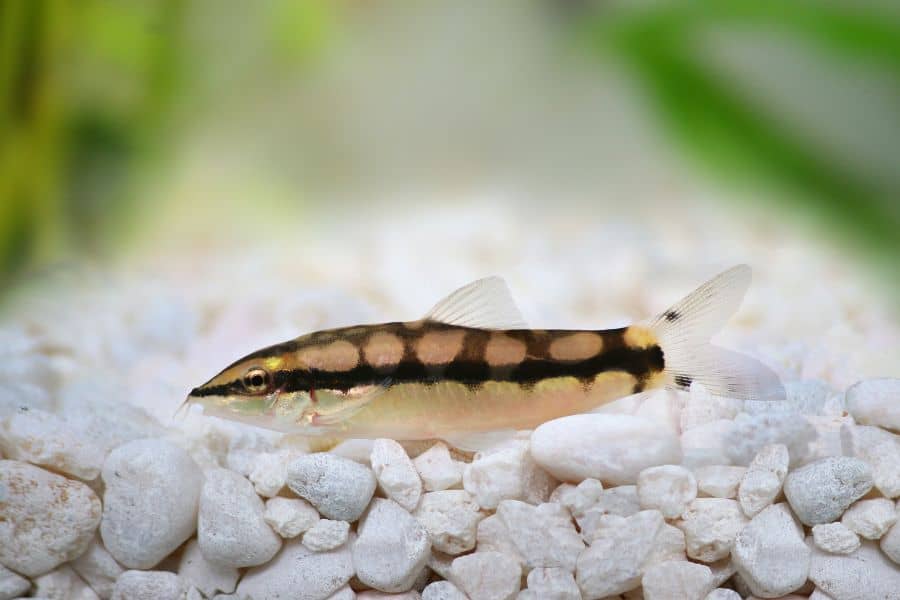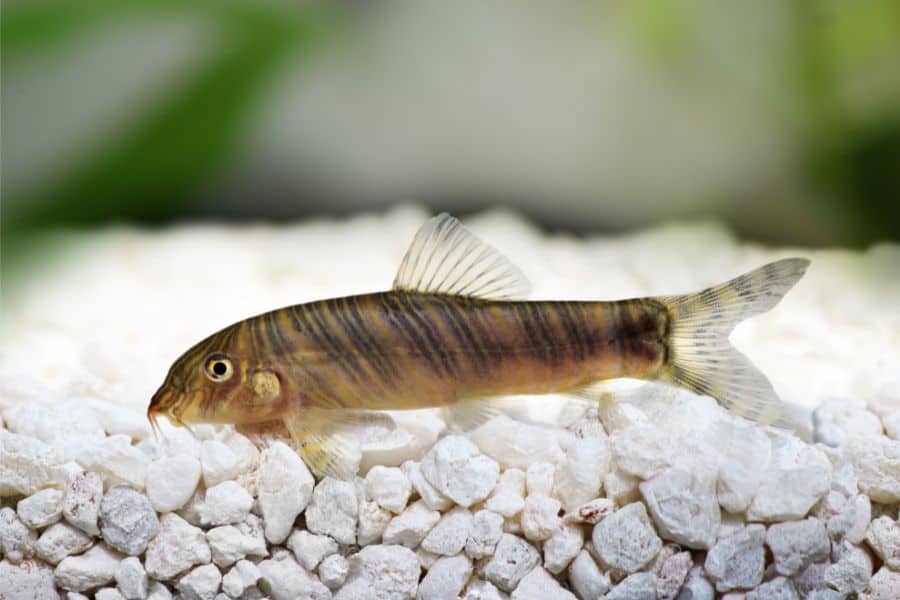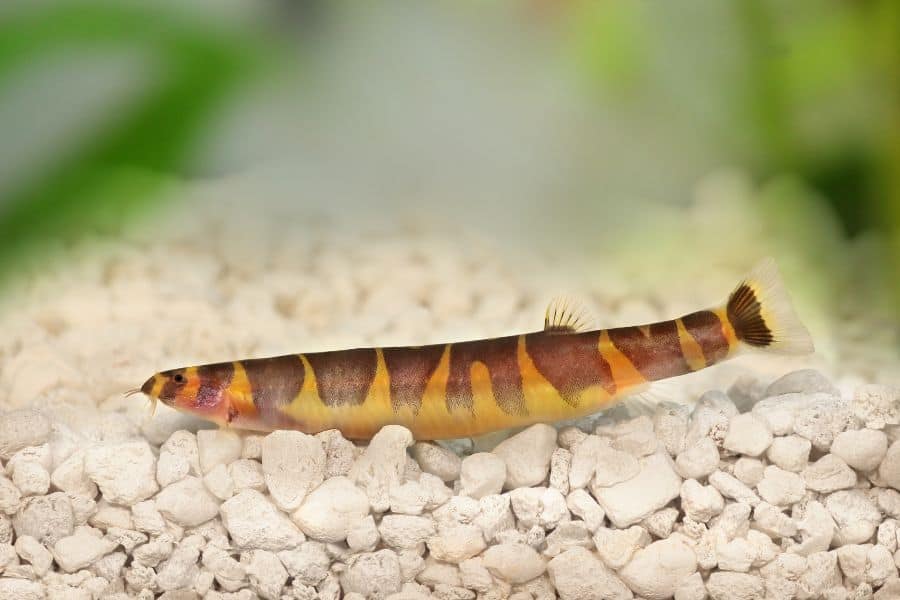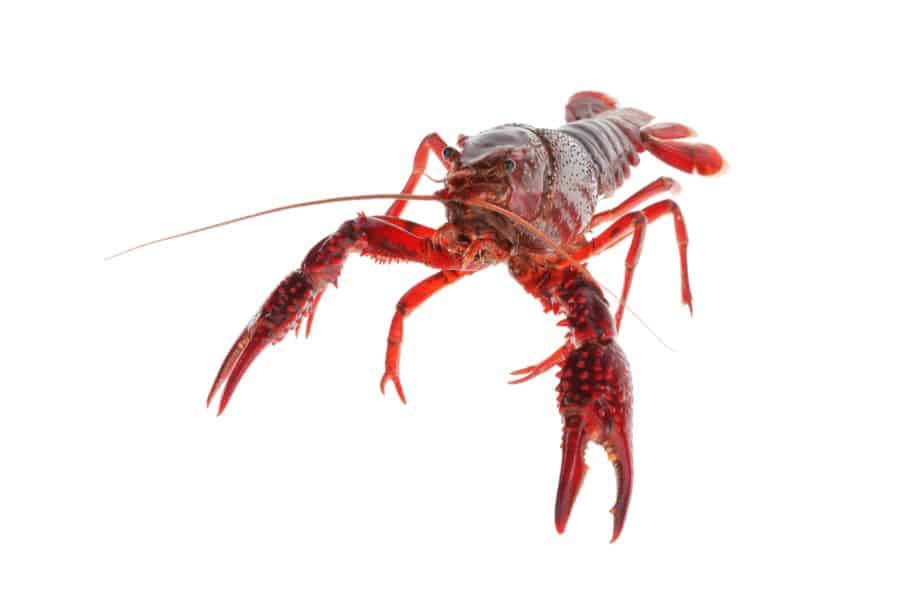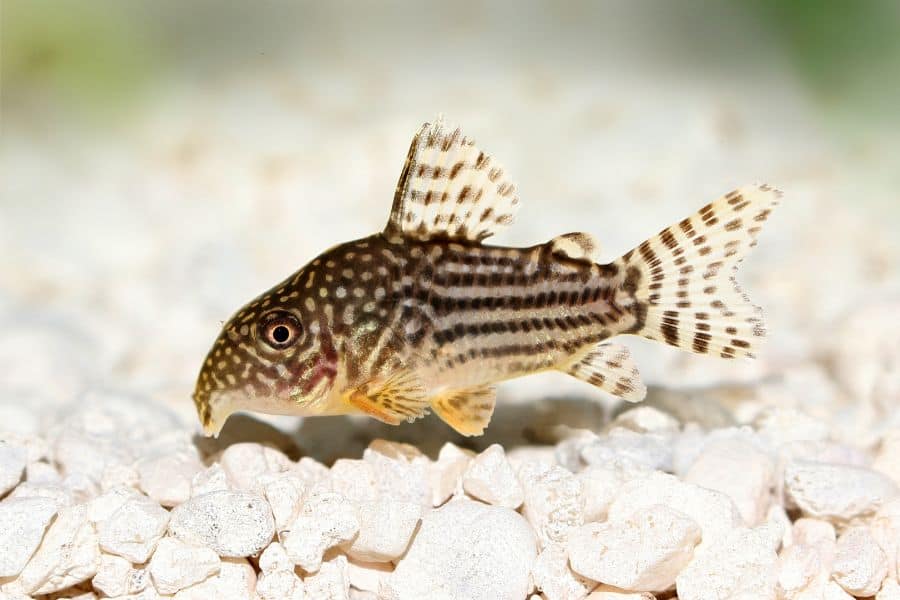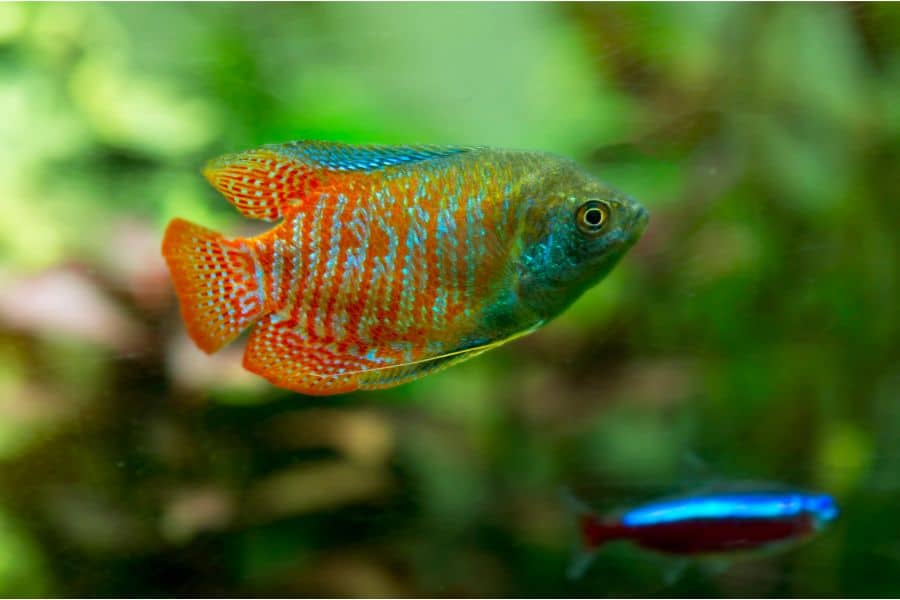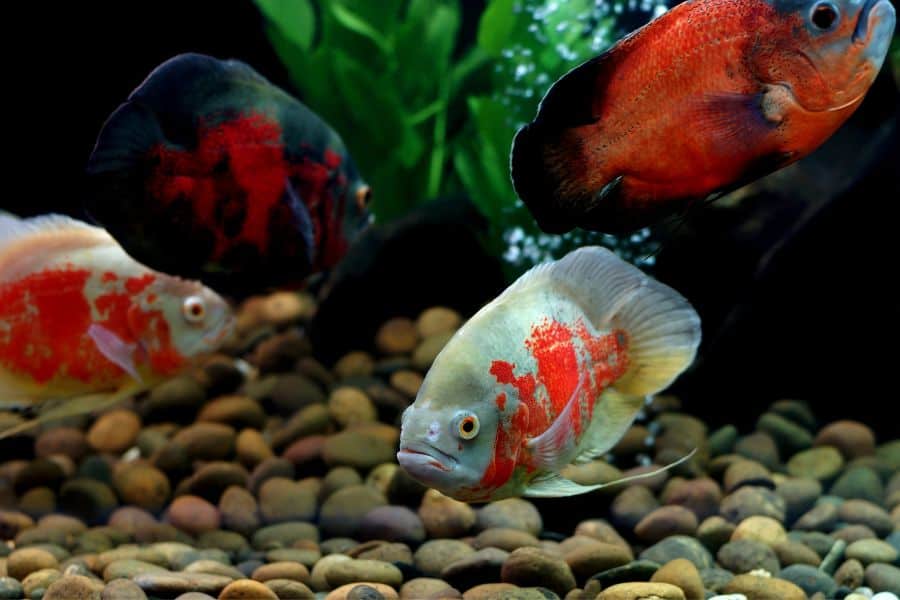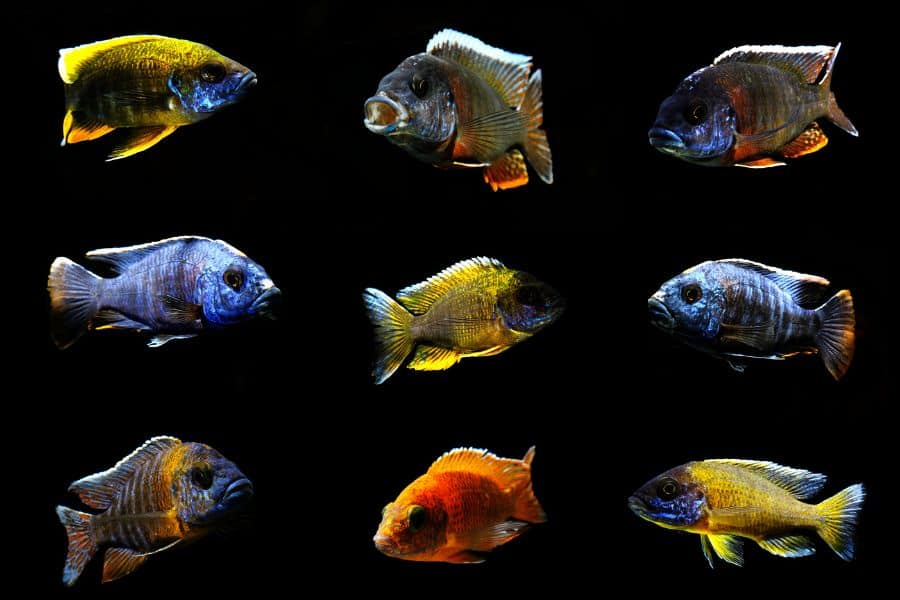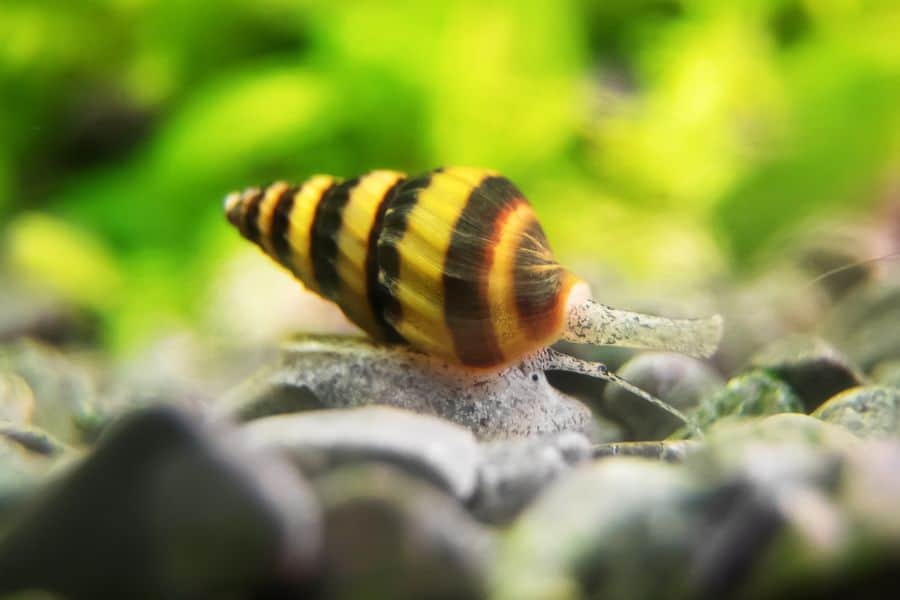Snails like the Nerite and Mystery snails are highly recommended when you are looking for a low-maintenance way of keeping your aquarium clean.
They are great helpers that actively feed on decaying waste and algae deposited throughout the tank. However, a pest snail infestation is something every aquarist will eventually have to deal with.
Snail outbreaks are pretty common, and the most typical infestation comes from the Malaysian trumpet snail. This type of snail is known for its fast cloning reproduction that needs only one female to fill up a tank with a dozen snails.
Getting rid of these snails can be tough since they are resilient and able to withstand low or high temperatures and poor water quality that kills most fish.
Taking care of the problem can be tough if you have to do it manually; that is where fish that eat snails come in. Some fish species are able to eat and digest snails as well as their eggs, ensuring you have a pest-free aquarium with little maintenance required on your part.
Controlling A Snail Infestation with Fish
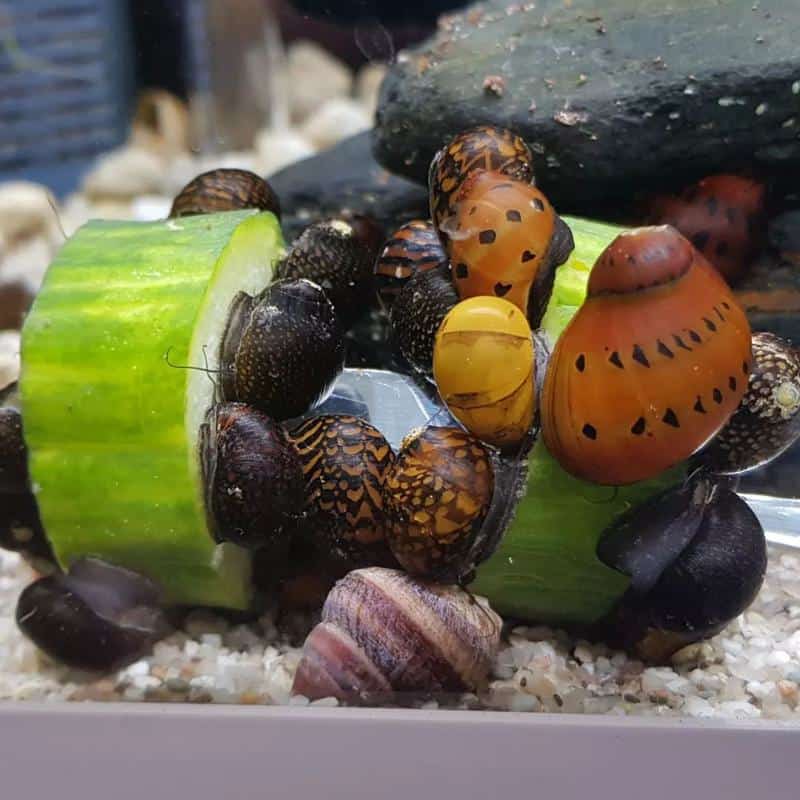
Snail infestations are usually started by plants you put in the aquarium. The little creatures are commonly found in plants shipped for aquarium use. Snail eggs are harder to catch on the plants, which is why quarantining the live plants is important.
Quarantine plants you bring in in separate tanks for weeks. If the is no snail outbreak, then you know it is safe to place the plant in your main tank.
Other ways of controlling pest snails include limiting algae growth, regular tank maintenance to remove waste & excess food, avoiding overfeeding, removing the snails by hand, or adopting a snail-eating fish to do the job for you.
It is important to remember that most fish do not actively eat snails. Meaning that they usually feed on the small creatures while scavenging for food or if the snails are close to their food.
However, some aggressive fish like the Oscars and African Cichlids actively feed on snails and are more efficient at doing the job when you want quick results.
Fish behavior is unpredictable too. You can get a fish that eats snails only to have it roam the tank and do nothing. Food on the snail’s shells is one of the reasons that such fish can get to eat the snails.
You will also notice the fish-eating snails more often when they are underfed, although this should not be a reason for a hobbyist to underfeed their pet.
Please note that some snail-eating fish do not feed on snail eggs or hatchlings. The snail feeding can also be affected by the size of the fish vs. the size of the snail. Smaller snail-eating fish like goldfish are less effective at getting rid of bigger snails. A huge snail population is also a factor when choosing what fish to get.
Finding a fish that eats snails is one thing, but you cannot get it unless it is compatible with your aquarium’s ecosystem. Only get fish that thrive in your tank environment and get along with the school of fish your presently own. Poor compatibility can lead to more problems down the road.
13 Best Aquarium Fish That Eat Snails
Your top picks for fish that eat snails are:
- Goldfish
- Betta Fish
- Yoyo Loach
- Clown Loach
- Dwarf Chain Loach
- Zebra Loach
- Kuhli Loach
- Crayfish
- Cory Catfish
- Striped Raphael Catfish
- Gourami
- Oscars
- African Cichlids
Let us take you deeper into the topic to see the unique snail-eating properties of these aquarium fish. Please remember to adhere to the recommended tank sizes and the optimal environmental conditions. If the fish is stressed in a bad environment, it will affect its ability to get rid of your snail infestation.
1. Goldfish
- Snail Diet: Small Snails, Snail Eggs, Hatchlings
- Size: 1-2 inches small to 10 inches large
- Recommended Tank Size: Large Tanks (20 gallons and above)
Yes, those adorable bright orange/red goldfish are a good solution for a pest infestation. If you are looking for a fish that eats ramshorn snails, then the goldfish is a great pick. The reason why goldfish are recommended for controlling these one-inch snails is that goldfish only feed on smaller snails.
The goldfish avoids adult snails in most cases unless they fit the snails in their mouths. As predators and opportunistic eaters, the omnivores goldfish are always on the hunt for something to it. The fish eventually figures out how to get the snails out of their shells and devour them.
A thriving environment for goldish is a water tank with water between 68-74 degrees Fahrenheit. A bigger fish tank is always best, but you can keep the goldfish in 10-20 gallons of water.
Water quality, on the other hand, is more important. Keep pH levels between 7-8.4 and do not overfeed them; this helps avoid excess waste production, thereby limiting ammonia, nitrates, and nitrite spikes that are dangerous.
2. Betta Fish
- Snail Diet: Small Snails
- Size: 3 inches average
- Recommended Tank Size: Small Tanks (one Betta per 10 gallons)
Interestingly, Betta fish are also known to occasionally eat snails.
Like goldfish, Bettas only feed on small snails that they can fit in their mouths. With an average size of 2-3 inches, they can live harmoniously with Mystery snails for years, which measure an average of two inches in length.
However, if you house them with small snails, such as young Ramshorns, they may attempt to have a bite. In many cases, they don’t even mean to eat the snail – they were merely curious and accidentally ended up swallowing them.
In terms of care, make sure you keep the Betta in calm waters, with a pH between 6.8 – 7.5 and temperatures between 76F-85F. They will also appreciate plenty of comfortable hiding spaces, so make sure you have cave décor and plants that offer lots of darkness and shade.
Also Read: Can Snails Live with Bettas?
3. Yoyo Loach
- Snail Diet: Small & Large Snails, Snail Eggs, Hatchlings
- Size: 5 inches long on average
- Recommended Tank Size: Medium to Large (40 gallons and above)
Also called the Yoyo Pakistani loaches, these fish are famous for feeding on invertebrates, including small shrimps and pest snails. They are very effective compared to many fish on this list due to the fact that they can eat up to 10 snails in one day.
They are an aggressive bunch that is known to crack snail shells regardless of their size. This is possible because of their pointy snouts that can poke into the shells and lick out the delicious slurps inside.
The pointy snout is a common feature in many loaches, which is why varieties like zebra, clown, and dwarf loaches are highly recommended for pest snails.
Keep the Yoyo loach in a school of at least four fish to ensure they do not get stressed. Lots of aquatic vegetation is preferred to offer the fish more food, and rocky substrates go a long way in simulating its natural environment.
4. Clown Loach
- Snail Diet: Small and Large Snails, Snail Eggs, Hatchlings
- Size: 5-10 inches on average
- Recommended Tank Size: Large (a group of four in at least 75 gallons)
Clown loaches are famously marketed as a snail-population-control species. These omnivores eat many things, from plants to worms to pest snails. They are much more effective in groups of at least four, which makes them more comfortable to roam around and munch on whatever delicious treat they get.
They are a good solution for getting rid of larger snails but keep in mind that they will rarely make an effort unless the prey is easy to consume. This is more likely if you did not get the fish from the wild or a habitat that had pest snails.
Like the Yoyo loaches, clown loaches thrive in rocky or sandy substrates that simulate their natural environment. You should also put them in a slow-flowing water tank filled with a sizeable assortment of hiding spots.
5. Dwarf Chain Loach
- Snail Diet: Small Snails, Snail Eggs, Hatchlings
- Size: 2 inches on average
- Recommended Tank Size: Medium (at least 30 gallons)
Do not let the size of the dwarf chain loach fool you. These loaches are machines at feasting on smaller snails like the ramshorns. They are very resilient than most loaches but with a short lifespan of about 2 to 3 years.
Keep the dwarf chain loach in water between 68-86 degrees Fahrenheit. pH should be at most 7.5 and never below 6. Also, remember that loaches only thrive in groups, a school of five being the minimum for dwarf chain loaches.
6. Zebra Loach
- Snail Diet: Small Snails, Snail Eggs, Hatchlings
- Size: 2-3 inches on average
- Recommended Tank Size: Medium (at least 30 gallons)
Zebra loaches mostly eat small freshwater snails. They are less efficient than yoyo loaches or the more aggressive African cichlids. They feed on snail eggs and smaller snails but won’t bother themselves with snails bigger than ¼ of their body size.
7. Kuhli Loach
- Snail Diet: Small Snails, Hatchlings, Snail Eggs
- Size: 2-3 inches on average
- Recommended Tank Size: Medium (at least 30 gallons)
Kuhli loaches are a more interesting bunch than the other snail-feeding loaches. Not only do they feed on small snails & hatchlings, but they are also opportunistic enough to eat other smaller fishes.
Kuhli only feeds on the small snails and is powerless over larger snails that are as long as they or bigger. If they are well domesticated and well fed, then it is not uncommon to see them peaceful and keeping to themselves.
Hobbyists know that manually cleaning the tank is one way of getting rid of pest snails. They also use the crash-and-serve method, where they physically crush the snail shells and let the small snail-eating fish have their meals. It sounds barbaric but it can be quite effective when you have fish that cannot eat larger snails.
8. Crayfish
- Snail Diet: Small & Large Snails, Snail Eggs, Hatchlings
- Size: 3 inches on average
- Recommended Tank Size: Small to Medium (about 20 gallons)
Many types of crayfish eat snails aggressively. However, this depends on the size. Dwarf crayfish are usually more peaceful and reserved, feeding on smaller snails from time to time alongside their eggs and hatchlings.
Bigger crayfish, on the other hand, will look for food all around the tank and eat any snail that can fit into their mouths. Multiple hobbyists have reported their crayfish eating larger algae-control snails like the Mystery snails and Apple snails.
The good news is: even though crayfish eat your algae-control snails, they themselves eat algae which means you will not necessarily need other snails for the job.
9. Cory Catfish
- Snail Diet: Small Snails, Snail Eggs
- Size: 1-3 inches on average
- Recommended Tank Size: Small to Medium (about 20-30 gallons)
Cory Catfish will only eat snails that are smaller than 0.1 inches. Their short stature and the snail’s hard shells are huge hindrances to the Cory Catfish. Despite this, the catfish are always trying to get a piece of the snails which is why they will ravage the whole tank eating smaller snails on their path. They also feed on snail eggs much faster than other fish.
Ensure to keep Cory in a peaceful school of fish. Adding gravel at the bottom and introducing live plants has been shown to make catfish happier.
10. Striped Raphael Catfish
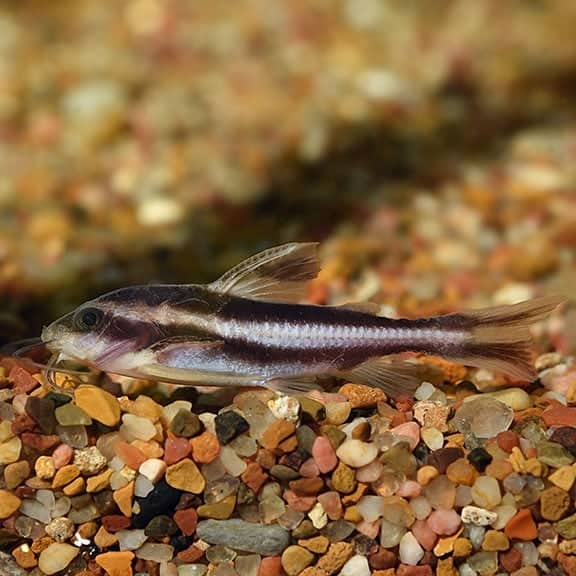
- Snail Diet: Large Snails
- Size: 7-9 inches on average
- Recommended Tank Size: Large (above 30 gallons)
Striped Raphael Catfish is a great pick if you want to get rid of bigger snails. These large tropical freshwater fish are known for feeding on Mystery snails and other meat sources in the tank.
Unlike other fish on the list, the Striped Raphael does not change its habits much between its natural habitat and captivity. Meaning they will feed on snails in as much frequency as they would in the wild. As much as this is a plus, it also means they do not fare well in artificial habitats because it is harder to breed them.
11. Dwarf Gourami
- Snail Diet: Small Snails
- Size: 2 inches on average
- Recommended Tank Size: Small (about 10 gallons)
All types of gourami can eat snails, but the dwarf variant is the most prevalent one at the job. Their small size makes them great hunters in places that larger fish cannot reach, leading to a cleaner tank that may have been infested with pets throughout the tine vents and cracks.
Despite their good reputation in this regard, the dwarf gourami does not depend on snails for much of their diet. Therefore, you will normally notice this behavior mostly in ponds as compared to aquarium tanks.
12. Oscars
- Snail Diet: Small & Large Snails, Hatchlings
- Size: 1-2 inches for younger ones, 10-12 inches for older ones
- Recommended Tank Size: Large tanks (55 gallons and above)
Oscars originated in South America. They are a type of cichlid that gets easily confused with the African cichlids from Africa. The key difference between the two is they thrive in different water environments.
Oscars prefer pH levels between 6-7.5, while the African cichlids are less versatile, opting for pH levels between 7.5 and 9. Even though the Oscars occasionally feed on snails, they are a relatively peaceful species that only eats them when they are reachable. However, the Oscars can get very aggressive with the snails if they are underfed and hungry.
13. African Cichlids
- Snail Diet: Larger Snails & Smaller Ones
- Size: 2-8 inches on average
- Recommended Tank Size: Large tanks (55 gallons and above)
African Cichlids are very aggressive compared to their sister Oscars. In fact, it is not advisable to keep an Oscar next to African cichlids since the Oscars will most likely be bullied into stress, or worse, the Oscars will not survive.
Their aggressive nature is, however, beneficial for snail cleaning. The cichlids prefer larger fish, but they can feast on smaller ones alike. Additionally, they are algae-eating fish which means they are more likely to run head to head with the snails at the bottom and feed on them.
One thing to keep in mind when considering African cichlids is that they only live in high-pH water tanks. High-pH tanks rarely have water plants, so the chances of getting a snail investigation are minimal.
Other Aquarium Animals That Eat Snails
This list has introduced you to the best fish in the snail-eating business. However, you may be surprised to know that there is a better animal for the job that is not a fish: The Assassin Snail.
It is called the Assassin snail because of what it does; it hides inconspicuously, usually by burying itself, and awaits other snails to pass by. The assassin then pounces on its prey, feeding on the vulnerable snails. A snail that eats other snails.
The 1-inch-long Assassin snail mainly feeds on snails but can also feast on their soft snail eggs, not hard ones like the ones from Nerite snails. Despite their love for snail food, Assassin snails do not eat each other.
Another aquatic creature known for eating snails is the Palaemonetes Kadiakensis Ghost Shrimp. Ghost shrimps, in general, eat snails, but this variety has some leg modifications that make it a hostile snail hunter.
The Palaemonetes Kadiakensis also feeds on snail eggs and smaller fish. Despite their fearsome hardiness, the Assassin snail is more reliable when you want an alternative to snail-eating fish.
